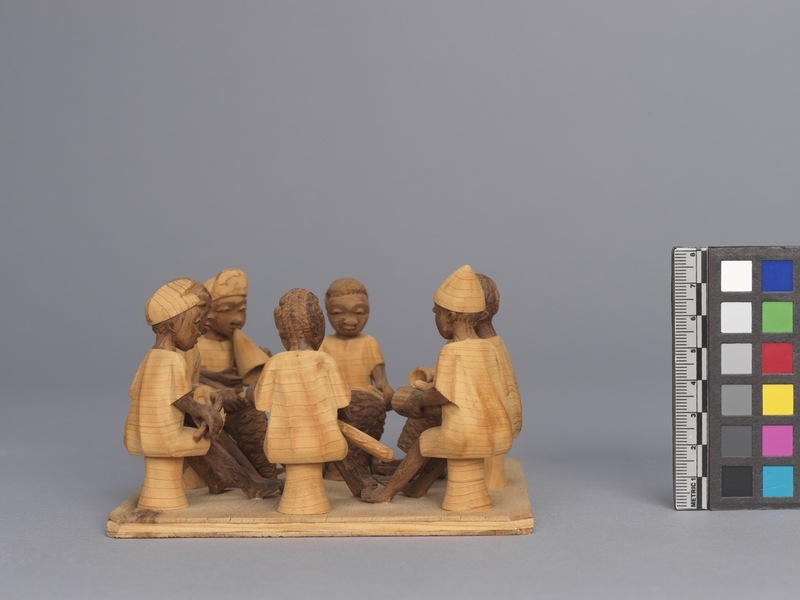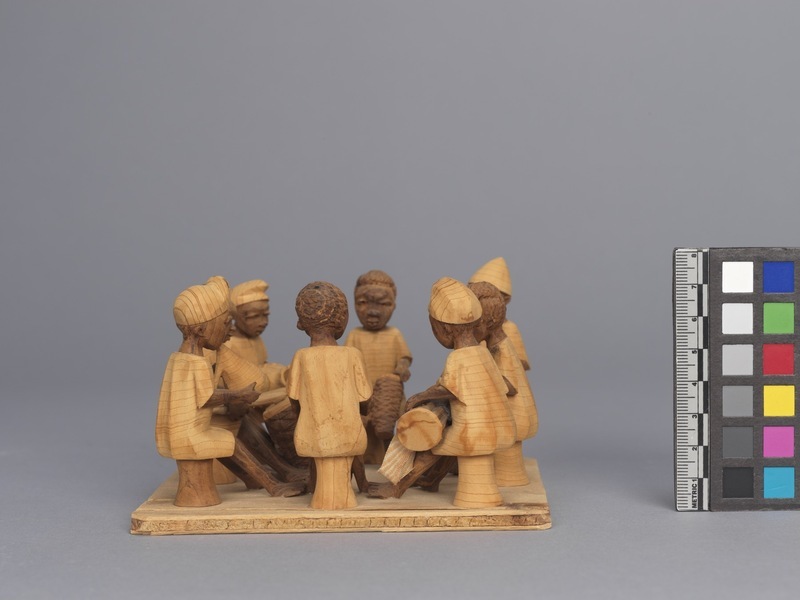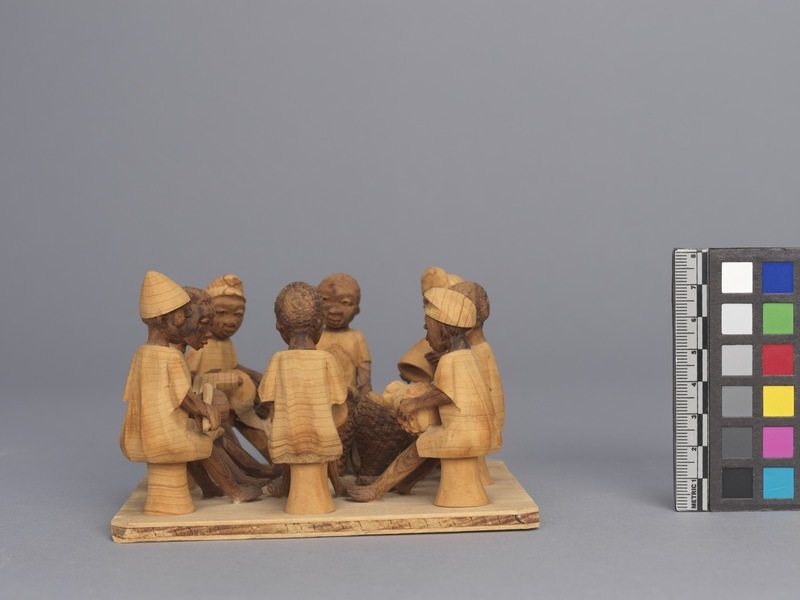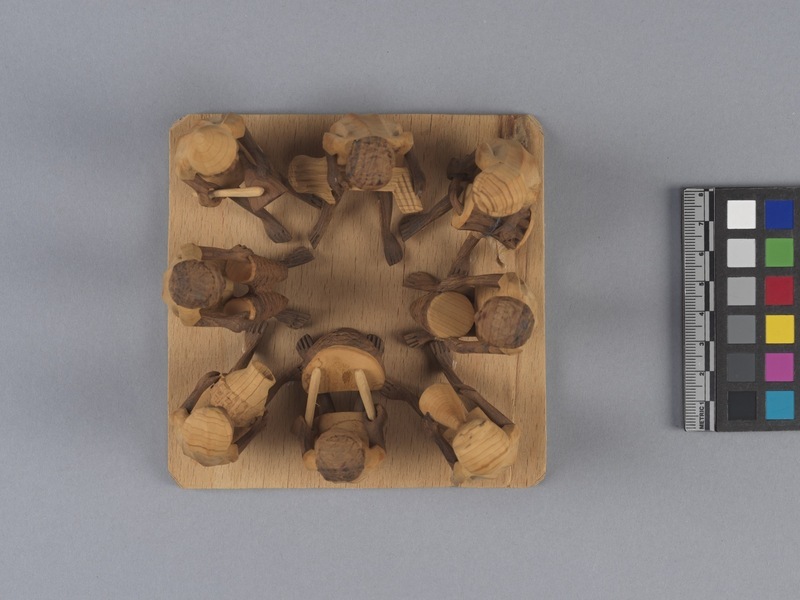Thorn Carving Item Number: 3446/3 from the MOA: University of British Columbia





Description
Thorn carving depicting a group of eight musicians. Figures adhered to square particle board base. All are sitting in a circle on cylindrical stools, facing one another. All figures are wearing long, short-sleeved tunics. Figures in corners wearing hats. Four figures are playing different types of drums, two by hand and two with sticks. Drum in bottom left corner has a white and yellow cloth strap and is being played with one curved stick. Other figures are playing a stringed instrument, horn, pot(?) and wood block instrument. Stools, figure outfits, horn, pot(?), drum heads, sticks and square base are light yellow-brown. Figures, the shells of the drums and wood block are dark brown. Donor initials on base.
History Of Use
Thorn carvings are miniatures depicting a variety of scenes from Nigerian life. The carvings first began to be made circa 1930. The thorns vary in size; they can be as large as 12.7 cm long and 9.6 cm wide. The thorn wood is comparatively soft and easy to carve; they are traditionally carved by men.
Narrative
Acquired in Nigeria during the years 1975-76, when the donor’s father was teaching at the Benin Technical College, in Benin City, Nigeria. The whole family was there for two years, while his father worked under the auspices of the Canadian International Development Agency (CIDA).
Specific Techniques
The light yellow-brown thorn and the dark brown thorn come from the ata tree; the light red-brown thorn comes from egun trees. The parts are glued together with viscous paste made that was made from rice cooked with water.
Cultural Context
craft; tourist art
Item History
- Made in Ibadan, Nigeria ? during 1975
- Collected in Nigeria between 1975 and 1976
- Owned by Eric Sadee before September 17, 2020
- Received from Eric Sadee (Donor) on September 17, 2020
What
- Name
- Thorn Carving
- Identification Number
- 3446/3
- Type of Item
- carving
- Material
- atum thorn, egun thorn, adhesive, cotton fibre and wood
- Overall
- height 8.0 cm, width 12.7 cm, depth 12.7 cm
Who
- Culture
- Yoruba
- Previous Owner
- Eric Sadee
- Received from
- Eric Sadee (Donor)
Where
- Holding Institution
- MOA: University of British Columbia
- Made in
- Ibadan, Nigeria ?
- Collected in
- Nigeria
When
- Creation Date
- during 1975
- Collection Date
- between 1975 and 1976
- Ownership Date
- before September 17, 2020
- Acquisition Date
- on September 17, 2020
Other
- Item Classes
- carvings & sculpture
- Condition
- good
- Accession Number
- 3446/0003